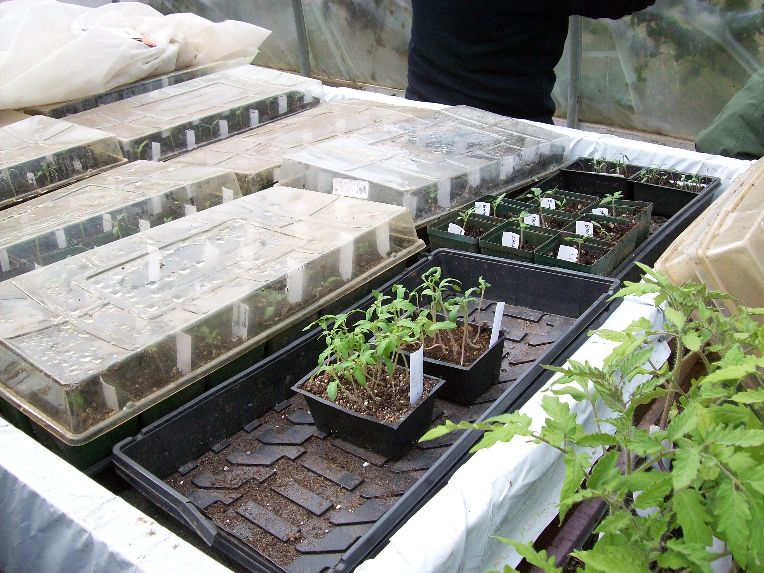Germination Basics: March 18, 2010 Marika's column in the Sooke Mirror
Mary Alice
Germination is an art. It is the most crucial step in the garden. A seed farm has the advantage of having many “volunteers” (self seeders) naturally show us when they choose to germinate, they mark the season and give clues to earliest planting possibilities for many different crops, in the cold frames and out in the field. At ALM farm, teaching our apprentices about germination is a crucial part of their education. It is a simple, basic skill that requires dedication, observation and daily nurturing. It is repetitive.
The first key to success is to give the seed constant moisture while it is germinating. Mist daily as necessary, creating a daily observation routine that works well for you and the seeds. I like to check in the morning before the heat of the day, and then again in the afternoon when it’s hot and dry conditions (germination in the summer is challenging). Use clear lids or row cover to help keep in moisture during germination. You don’t want it sopping swampy wet either; remember to keep the balance. Use a light mix to start your transplants; too rich of a mix will make the seed more susceptible to rot and fungal problems.
The second key is to know the temperature the seed requires to germinate. Most are happy at about 17 C. A heat mat is helpful to create the right conditions for optimum germination, especially early in the season. Seeds will not germinate if they are too cold or too hot. The earliest spring crops are vegetables that germinate in cooler soils; crops such as broad beans, peas, spinach and potatoes are the first crops to be planted outside. Early spring is a busy time for the heat table, things coming and going, some crops like lettuce spending 3-7 days there, just for germination then they are off the heat tables and being gradually hardened of until they are transplanted outside 3-6 weeks later and others like peppers who are babied all the way along, spending up to 4 months lounging about soaking up the heat off the heat tables to the last moment. Wait to plant beans and corn until the soil has warmed up (May-June) or they will not germinate and instead rot in the cool soil. In the summer, use a shady area to get summer lettuces to germinate, as they don’t germinate well out in the full heat of the day and it is difficult to keep them moist.
There are other specific requirements that seeds can have. Some require darkness to germinate (fennel, cilantro, nasturtium, calendula). Bury the seed well (but not too deep) to ensure darkness. We often cover these crops with black plastic until germination occurs, then remove as soon as the first seedlings emerge. Some need light to germinate (lettuce, dill) sow these on the surface and tamp in with a rake or mister, taking extra care in keeping the seed moist as it is more susceptible to drying out. The rest don’t seem to mind either way, constant moisture is all they require to germinate well and develop into healthy seedlings (our next topic).
